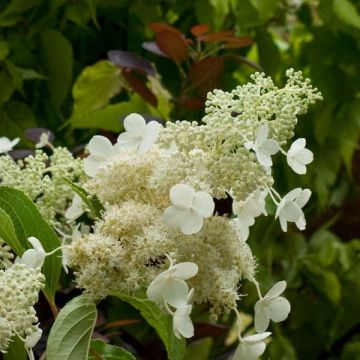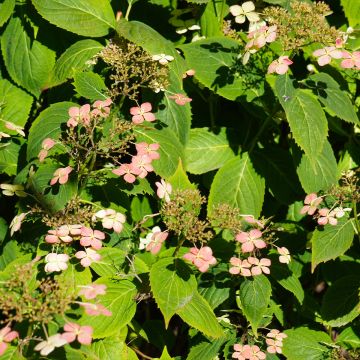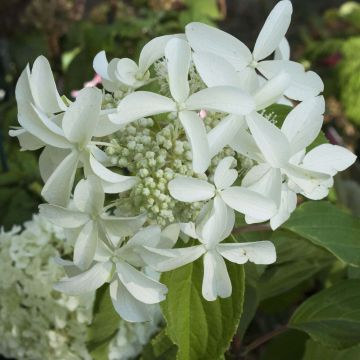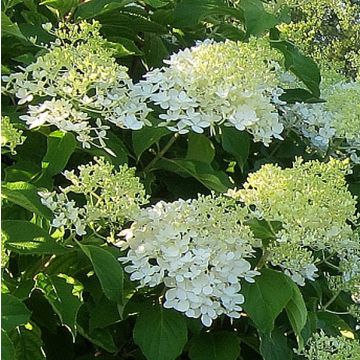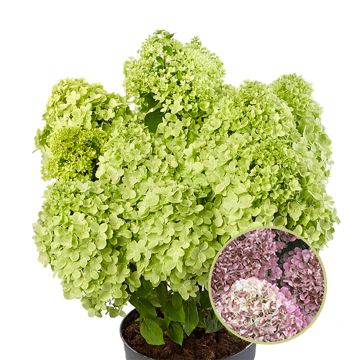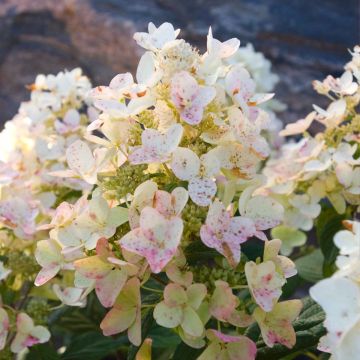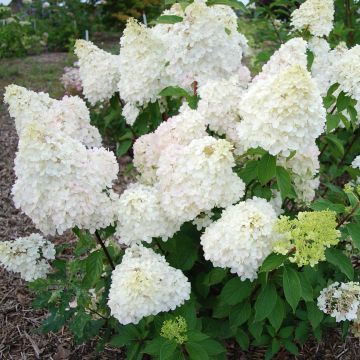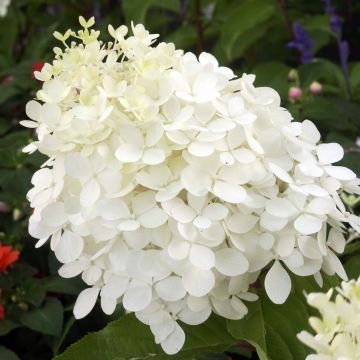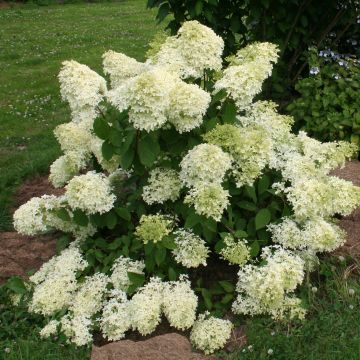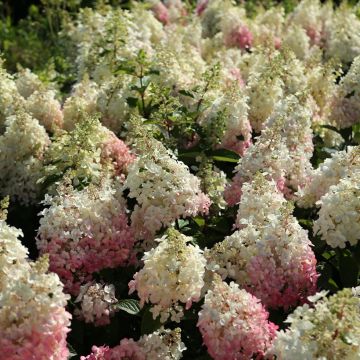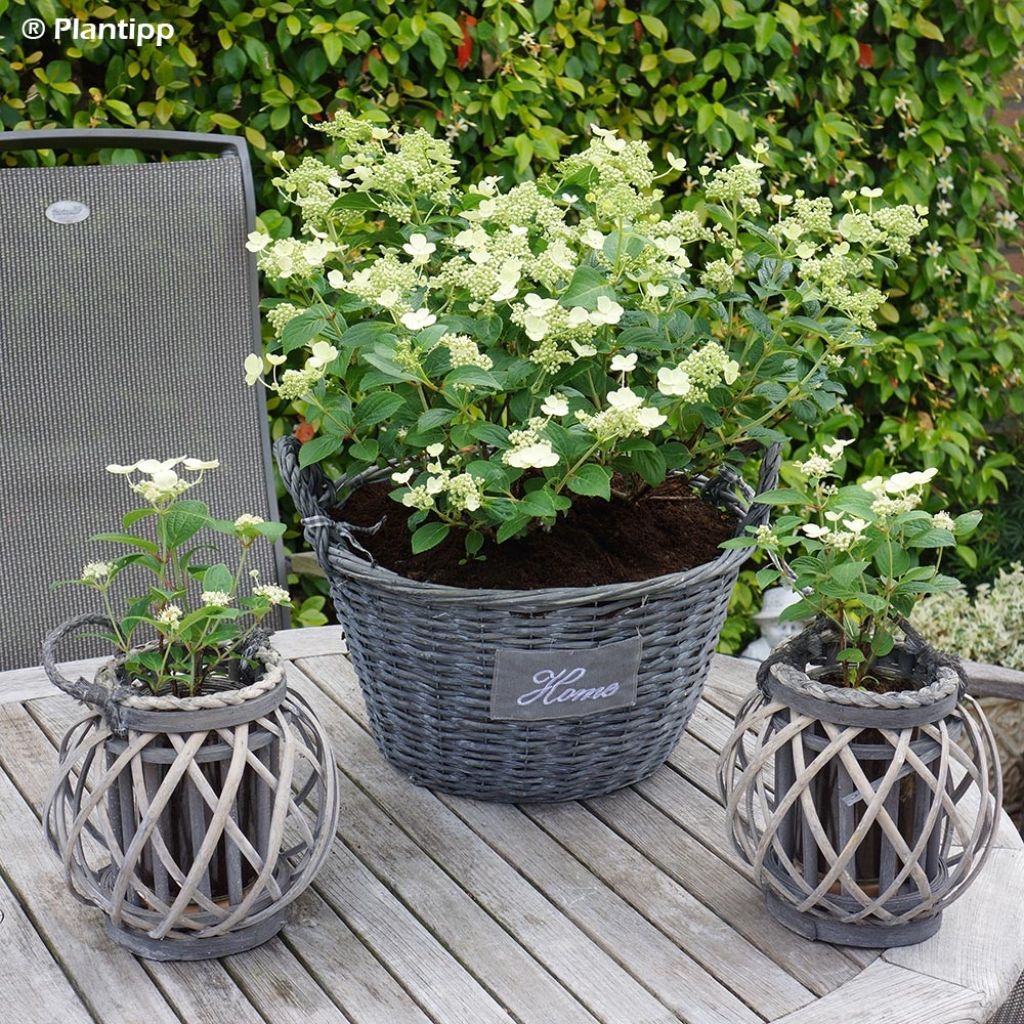

Hydrangea paniculata Prim White
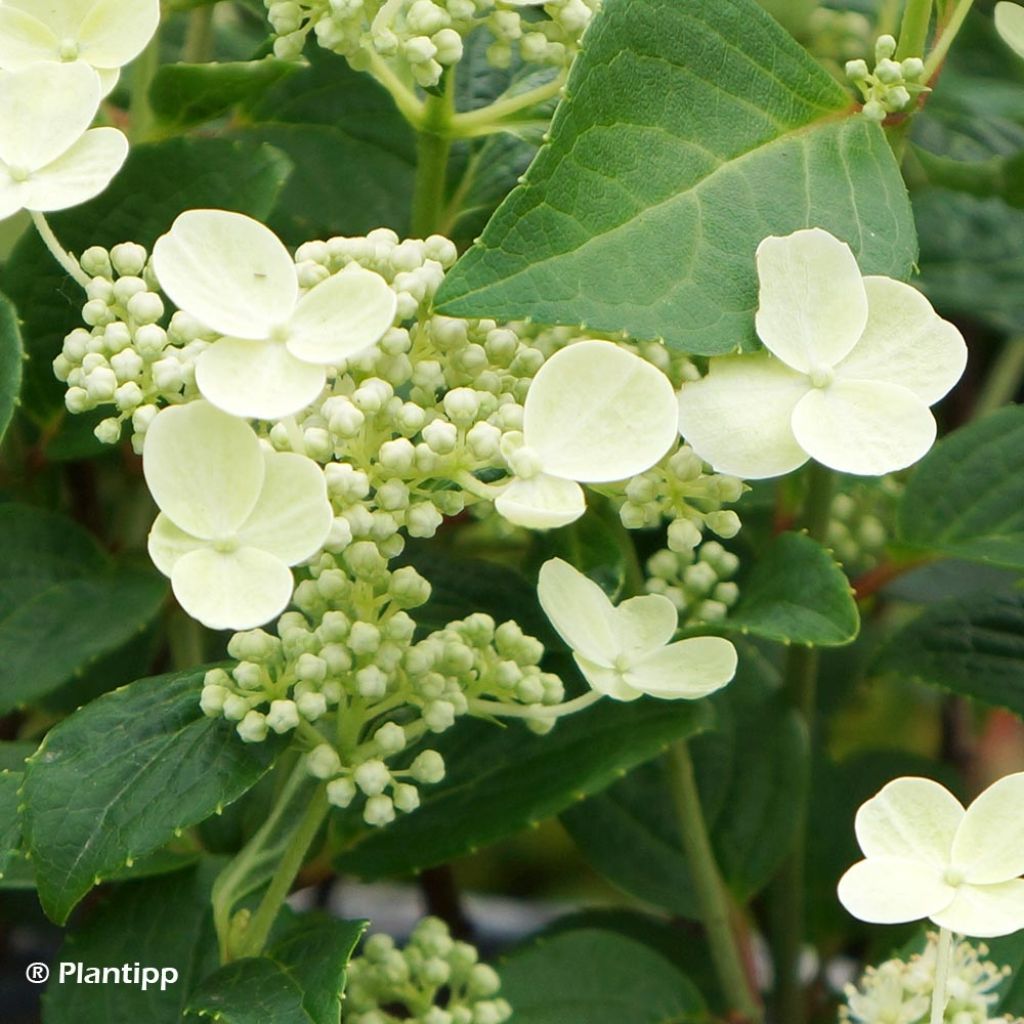

Hydrangea paniculata Prim White
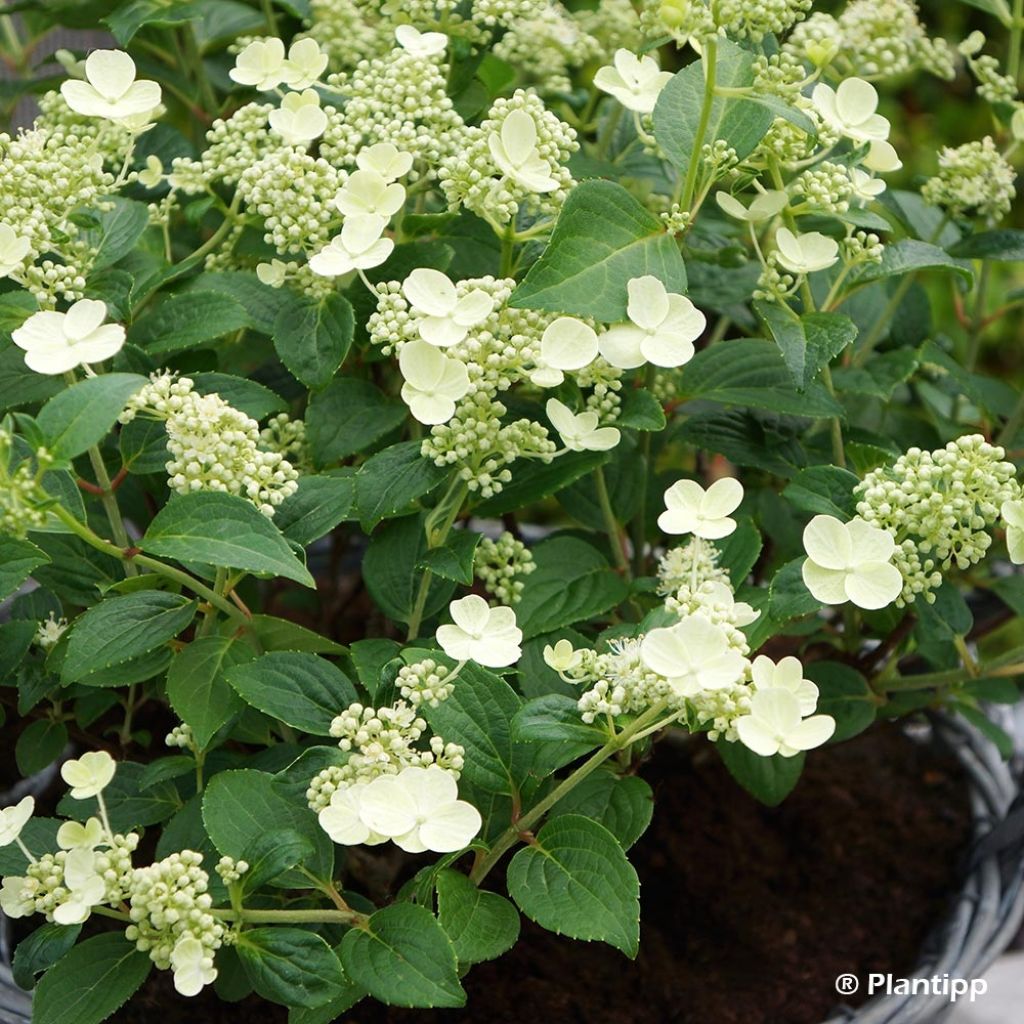

Hydrangea paniculata Prim White
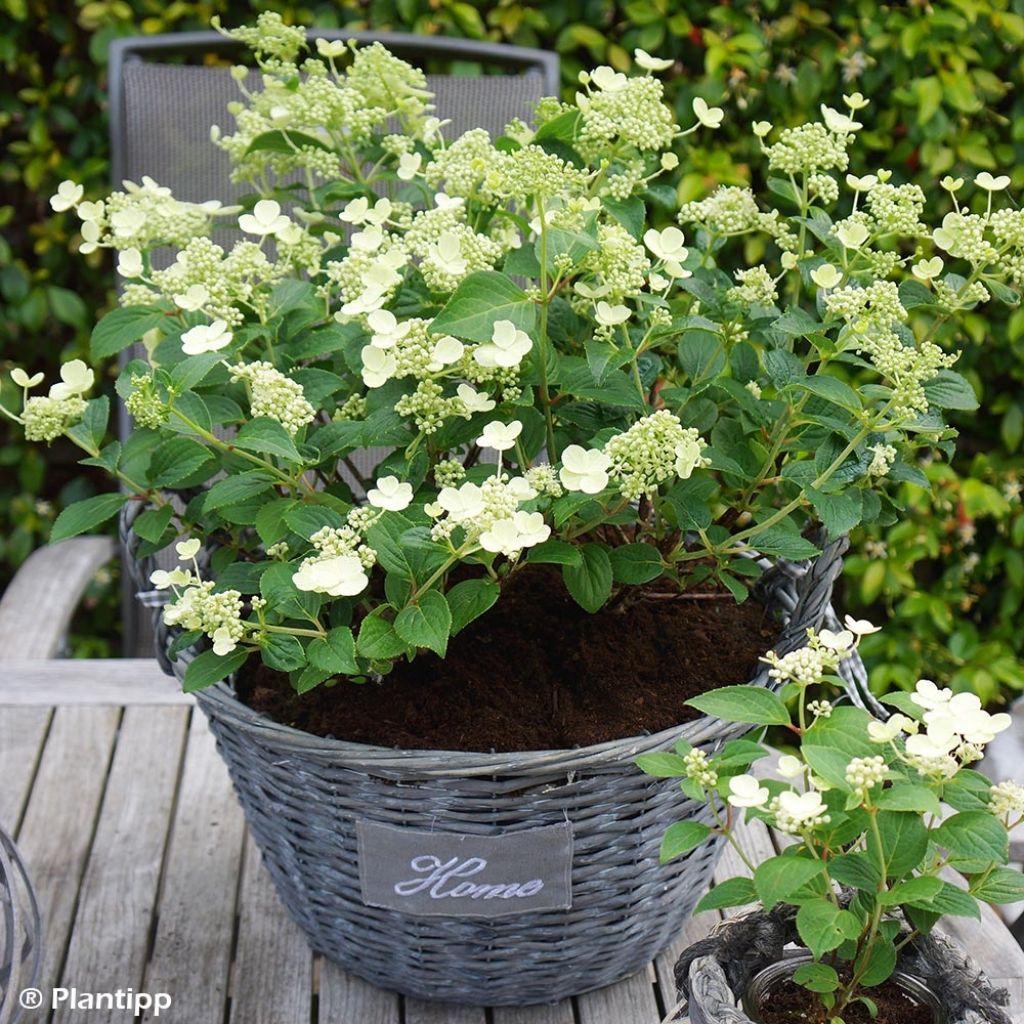

Hydrangea paniculata Prim White
Hydrangea paniculata Prim White
Hydrangea paniculata Prim White ®
Paniculate Hydrangea, Panicled Hydrangea, Panicle Hydrangea
This item cannot be shipped to the selected country
Delivery charge from €5.90
More information
Schedule delivery date,
and select date in basket
This plant carries a 24 months recovery warranty
More information
We guarantee the quality of our plants for a full growing cycle, and will replace at our expense any plant that fails to recover under normal climatic and planting conditions.
From €5.90 for pickup delivery and €6.90 for home delivery
Express home delivery from €8.90.
Does this plant fit my garden?
Set up your Plantfit profile →
Description
Hydrangea paniculata 'Prim White' is a new variety of paniculate hydrangea that appeals for its early and prolonged flowering and the elegance of its habit, which is at once ramified, rounded and harmonious. It is one of the first to flower, as early as the end of May, offering large umbels of white flowers that will make a big impact in the garden, in pots on the terrace or in bouquets. They bloom on a beautiful young plant with thin stems that takes on beautiful colours in autumn. This hydrangea is not very cumbersome and finds its place in gardens of all sizes. It is grown in a preferably humus-rich, fresh soil, in partial shade or in non-burning sun.
Hydrangea paniculata, also called Paniculate Hydrangea, is a species of hydrangea from the Hydrangeaceae family native to the leafy forests of China and Japan. Particularly hardy, it is easy to grow in any good garden soil that remains fresh in summer, and which is preferably slightly acidic or without an excess of lime.
The 'Prim White' variety, recently introduced to the market, was selected in France by Marie-France Doll. It comes from a seedling of Hydrangea paniculata 'Dharuma', which it surpasses in the quality of its vegetation. The shrub, with a rounded habit and moderately rapid growth, develops thin but well-ramified stems of a grey-green colour. At maturity, around the age of 10 years, it will rarely exceed 1.8 m (5 ft 11 in) in height for 1.6 m (5 ft 2 in) in width. From the end of May, numerous conical flower panicles unfold on the previous year's branches; these are slightly flattened and measure 15 cm (5.9 in) long. They contain mainly sterile, single florets, evolving from cream to white. It is common to observe a small rise in flowering in September, in rich and fresh soil. From spring, the branches bear finely dentate, ovate leaves of a fairly light green colour, measuring 5 to 15 cm (2 to 5.9 in) long and 5 to 7 cm wide, carried by very red petioles. They turn yellow to orange in autumn before disappearing in winter. Paniculate hydrangeas are less sensitive to late frosts, as they mostly flower on the shoots of the year.
Hydrangea paniculata differs from its cousin, Hydrangea macrophylla, by its good tolerance to sun, sea spray and relative drought. Planted in any good garden soil, without too much lime, Hydrangea paniculata 'Prim White' forms, over a few seasons, a small and elegant bush that flowers for three months. Install it alone, in a low hedge or in a bed, or even in light undergrowth, mixed with other hydrangeas and perpetual roses to play with contrasts and shapes. You can also combine it with lilies, and grasses like Miscanthus, Panicum virgatum and Squaw. Its rather modest stature for a paniculate hydrangea allows it to be incorporated into many gardens. It is possible to grow it in a large pot on the terrace where it will live for some years with the addition of fertiliser and regular watering.
Report an error about the product description
Hydrangea paniculata Prim White in pictures
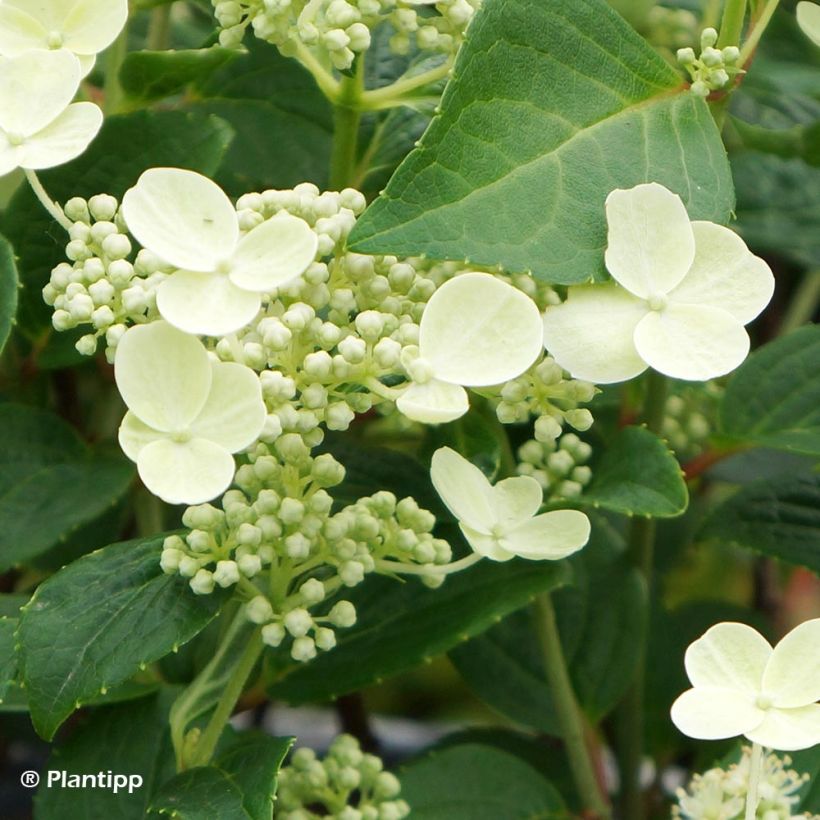

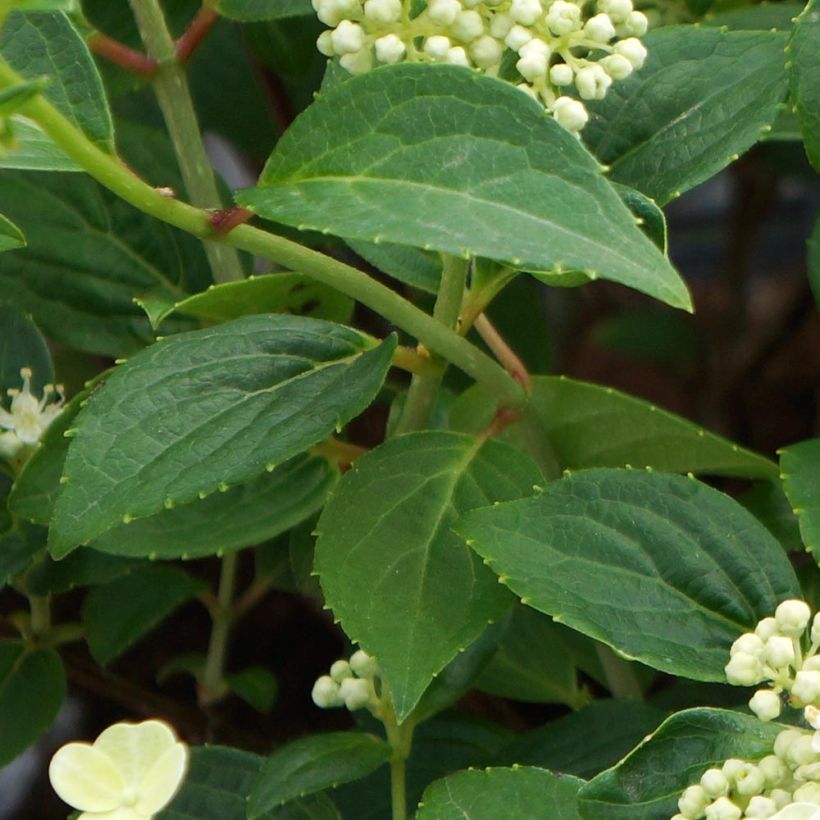

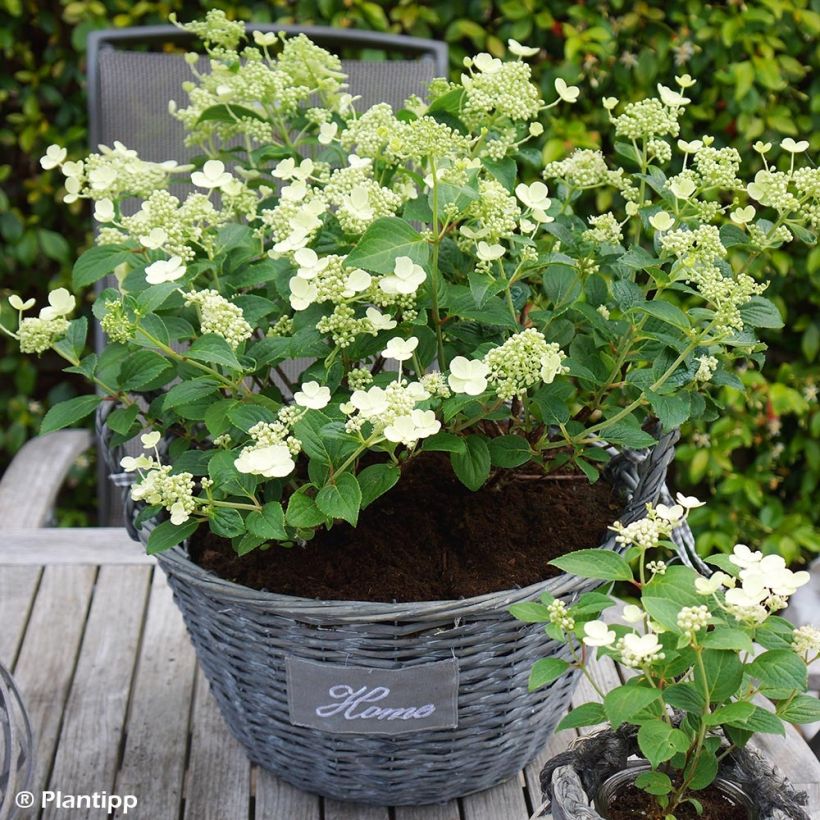

Plant habit
Flowering
Foliage
Botanical data
Hydrangea
paniculata
Prim White ®
Hydrangeaceae
Paniculate Hydrangea, Panicled Hydrangea, Panicle Hydrangea
Cultivar or hybrid
Other Hydrangea Paniculata
Planting and care
Hydrangea paniculata Prim White is not very demanding in terms of the nature of the soil, as long as it is rather fresh and not too heavy or too chalky. It requires a non-scorching, sunny or semi-shaded exposure. When planting, install it in a deeply worked soil. A good base fertiliser (horn or dried blood) will aid the recovery of your young plant and nourish it without risk of burning. If your soil is dry, mix a water retainer with the soil when filling in the planting hole and provide a surface watering basin.
At the end of summer, we advise you not to cut the dry panicles that will protect the terminal shoots of the branches in winter; you should cut all the dry flowers at the end of February or on the first summer days. The plant's spring vegetation appears rather late.
Hydrangea paniculata can be pruned after flowering. Except to deliberately limit the expansion of the bush if it has become too large, you should be careful not to remove the two-year-old branches, as doing so will compromise the plant's development.
Hydrangea Paniculata requires less water and easily establishes itself even in non-acidic soil. It flowers generously from May-June until the first frosts. When planted in the sun, its inflorescences change colour in the autumn.
Planting period
Intended location
Care
This item has not been reviewed yet - be the first to leave a review about it.
Haven't found what you were looking for?
Hardiness is the lowest winter temperature a plant can endure without suffering serious damage or even dying. However, hardiness is affected by location (a sheltered area, such as a patio), protection (winter cover) and soil type (hardiness is improved by well-drained soil).

Photo Sharing Terms & Conditions
In order to encourage gardeners to interact and share their experiences, Promesse de fleurs offers various media enabling content to be uploaded onto its Site - in particular via the ‘Photo sharing’ module.
The User agrees to refrain from:
- Posting any content that is illegal, prejudicial, insulting, racist, inciteful to hatred, revisionist, contrary to public decency, that infringes on privacy or on the privacy rights of third parties, in particular the publicity rights of persons and goods, intellectual property rights, or the right to privacy.
- Submitting content on behalf of a third party;
- Impersonate the identity of a third party and/or publish any personal information about a third party;
In general, the User undertakes to refrain from any unethical behaviour.
All Content (in particular text, comments, files, images, photos, videos, creative works, etc.), which may be subject to property or intellectual property rights, image or other private rights, shall remain the property of the User, subject to the limited rights granted by the terms of the licence granted by Promesse de fleurs as stated below. Users are at liberty to publish or not to publish such Content on the Site, notably via the ‘Photo Sharing’ facility, and accept that this Content shall be made public and freely accessible, notably on the Internet.
Users further acknowledge, undertake to have ,and guarantee that they hold all necessary rights and permissions to publish such material on the Site, in particular with regard to the legislation in force pertaining to any privacy, property, intellectual property, image, or contractual rights, or rights of any other nature. By publishing such Content on the Site, Users acknowledge accepting full liability as publishers of the Content within the meaning of the law, and grant Promesse de fleurs, free of charge, an inclusive, worldwide licence for the said Content for the entire duration of its publication, including all reproduction, representation, up/downloading, displaying, performing, transmission, and storage rights.
Users also grant permission for their name to be linked to the Content and accept that this link may not always be made available.
By engaging in posting material, Users consent to their Content becoming automatically accessible on the Internet, in particular on other sites and/or blogs and/or web pages of the Promesse de fleurs site, including in particular social pages and the Promesse de fleurs catalogue.
Users may secure the removal of entrusted content free of charge by issuing a simple request via our contact form.
The flowering period indicated on our website applies to countries and regions located in USDA zone 8 (France, the United Kingdom, Ireland, the Netherlands, etc.)
It will vary according to where you live:
- In zones 9 to 10 (Italy, Spain, Greece, etc.), flowering will occur about 2 to 4 weeks earlier.
- In zones 6 to 7 (Germany, Poland, Slovenia, and lower mountainous regions), flowering will be delayed by 2 to 3 weeks.
- In zone 5 (Central Europe, Scandinavia), blooming will be delayed by 3 to 5 weeks.
In temperate climates, pruning of spring-flowering shrubs (forsythia, spireas, etc.) should be done just after flowering.
Pruning of summer-flowering shrubs (Indian Lilac, Perovskia, etc.) can be done in winter or spring.
In cold regions as well as with frost-sensitive plants, avoid pruning too early when severe frosts may still occur.
The planting period indicated on our website applies to countries and regions located in USDA zone 8 (France, United Kingdom, Ireland, Netherlands).
It will vary according to where you live:
- In Mediterranean zones (Marseille, Madrid, Milan, etc.), autumn and winter are the best planting periods.
- In continental zones (Strasbourg, Munich, Vienna, etc.), delay planting by 2 to 3 weeks in spring and bring it forward by 2 to 4 weeks in autumn.
- In mountainous regions (the Alps, Pyrenees, Carpathians, etc.), it is best to plant in late spring (May-June) or late summer (August-September).
The harvesting period indicated on our website applies to countries and regions in USDA zone 8 (France, England, Ireland, the Netherlands).
In colder areas (Scandinavia, Poland, Austria...) fruit and vegetable harvests are likely to be delayed by 3-4 weeks.
In warmer areas (Italy, Spain, Greece, etc.), harvesting will probably take place earlier, depending on weather conditions.
The sowing periods indicated on our website apply to countries and regions within USDA Zone 8 (France, UK, Ireland, Netherlands).
In colder areas (Scandinavia, Poland, Austria...), delay any outdoor sowing by 3-4 weeks, or sow under glass.
In warmer climes (Italy, Spain, Greece, etc.), bring outdoor sowing forward by a few weeks.

































